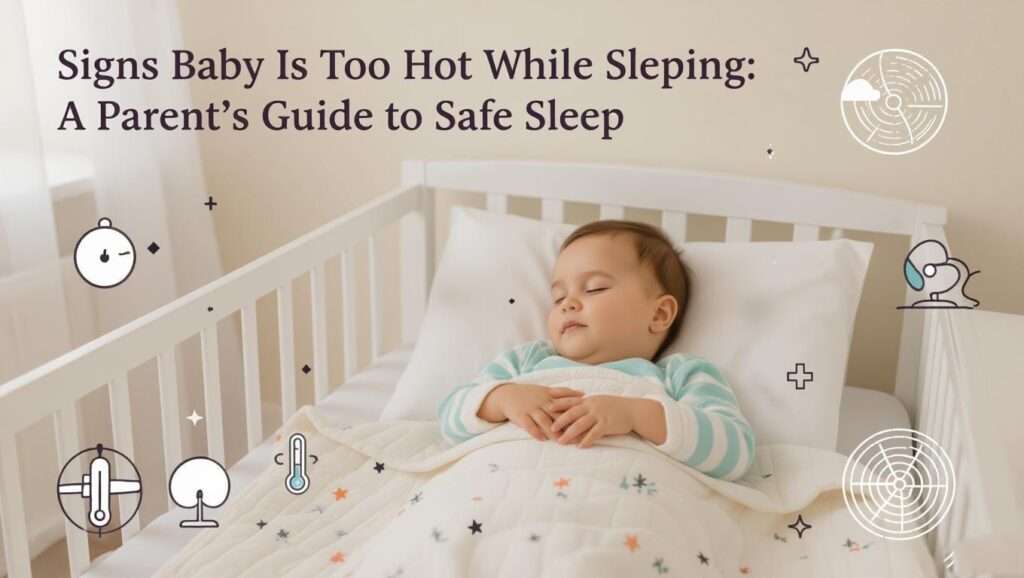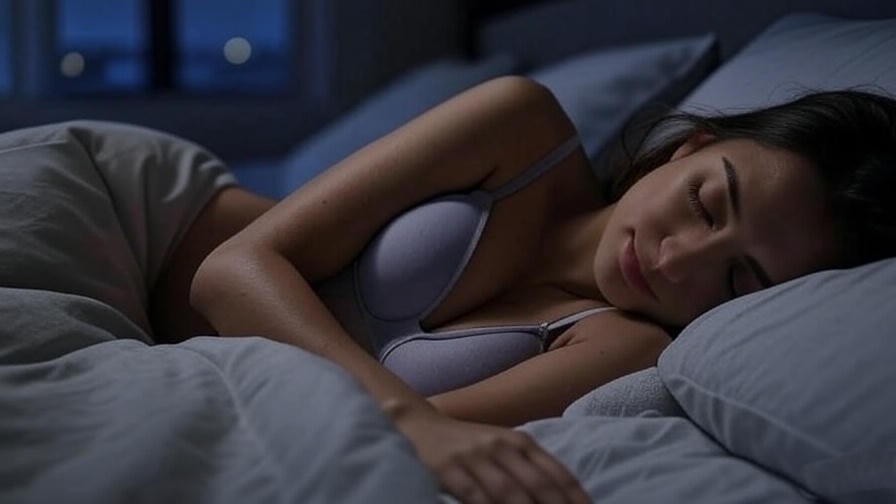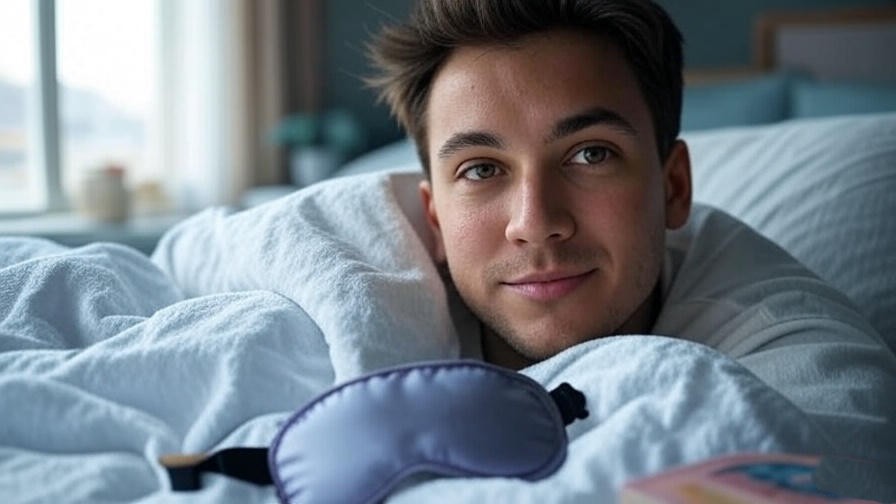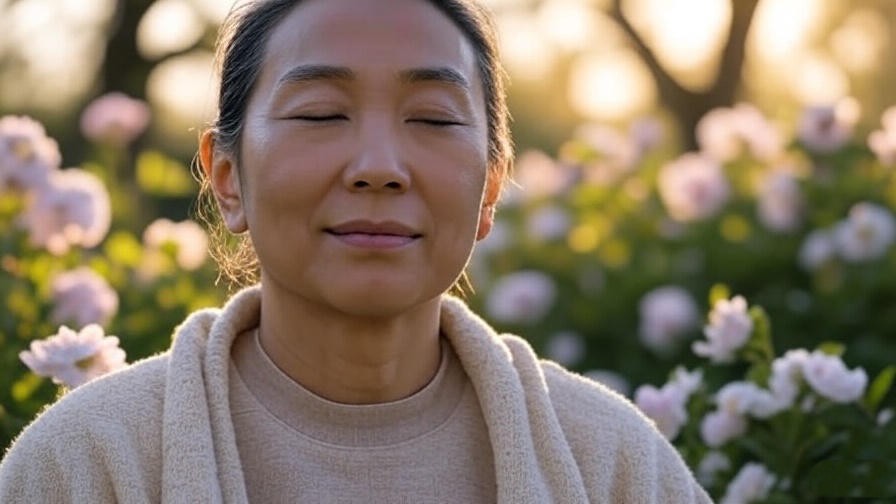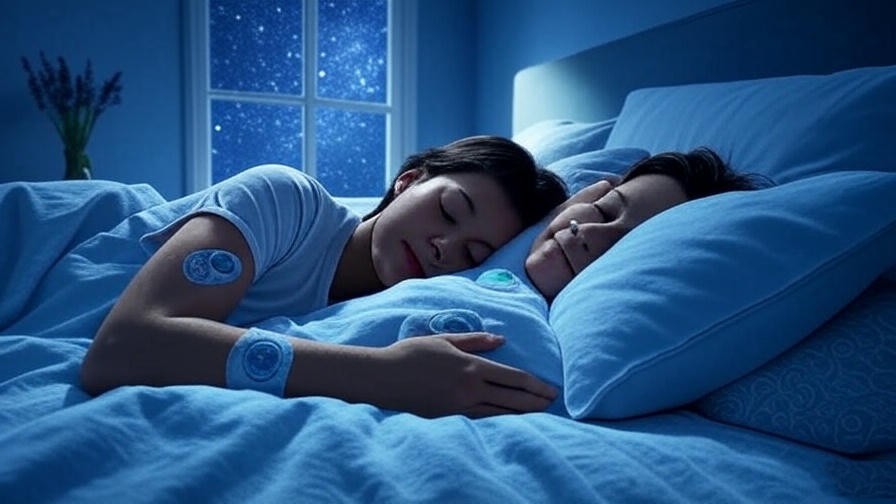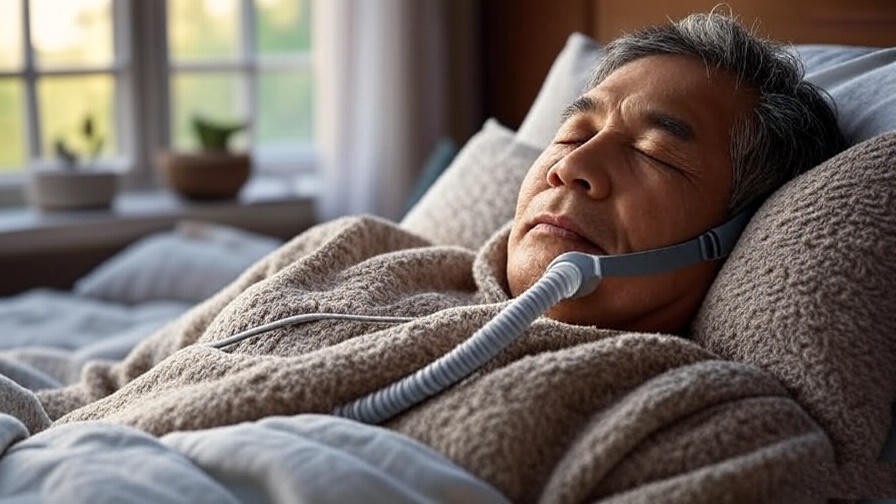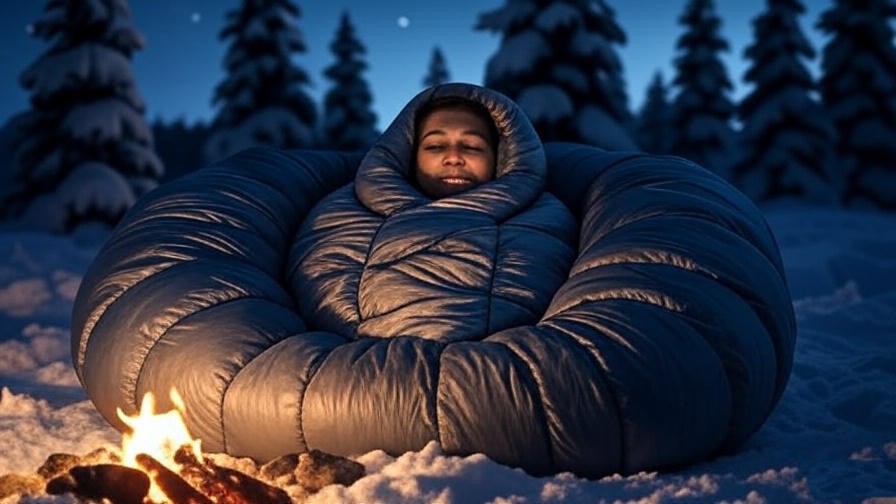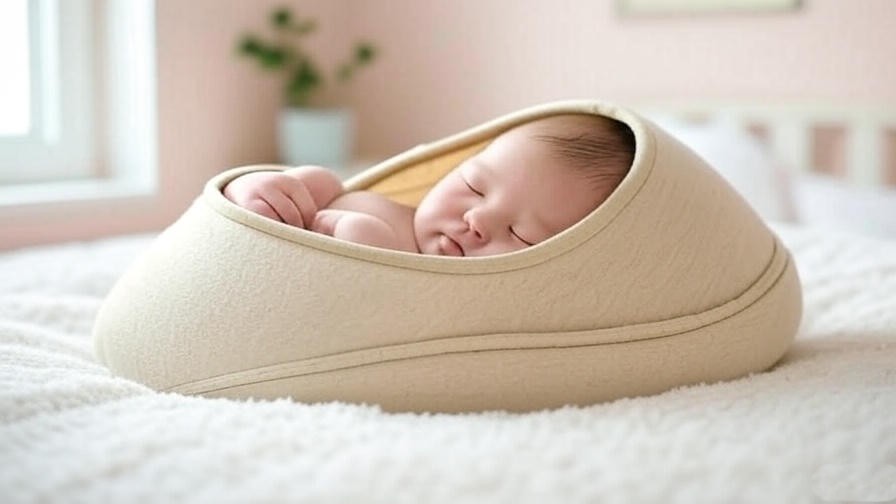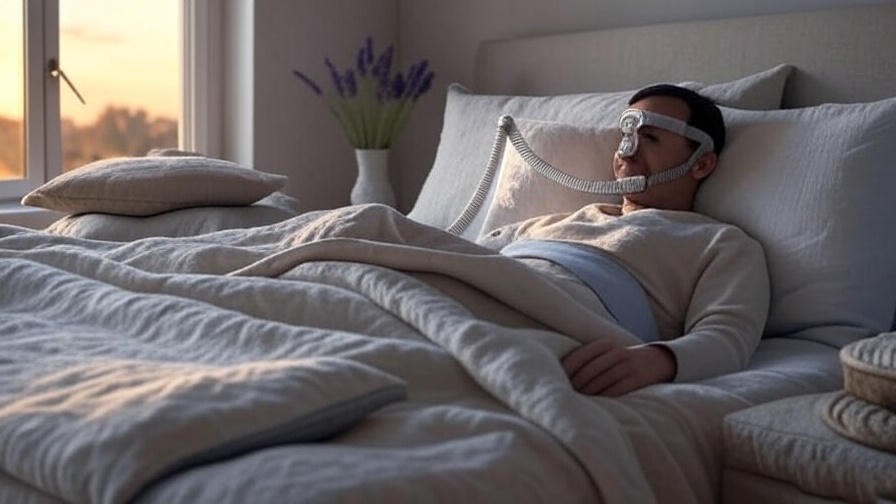Imagine this: you tiptoe into your baby’s nursery for a midnight check, heart racing as you gently touch their tiny forehead. Is it too warm? Are they comfortable? Every parent knows this quiet worry, especially when it comes to ensuring their baby is safe and cozy during sleep. One critical concern is recognizing the signs baby is too hot while sleeping, as overheating can lead to discomfort, disrupted sleep, or even serious risks like Sudden Infant Death Syndrome (SIDS). Backed by pediatric expertise from trusted sources like the American Academy of Pediatrics (AAP), this guide will empower you with clear, actionable insights. You’ll learn how to spot overheating, prevent it, and create a safe sleep environment that nurtures your baby’s well-being.
In this comprehensive article, we’ll cover the key indicators of overheating, common causes, practical prevention strategies, and expert tips to ensure your baby sleeps safely and soundly. Whether you’re a first-time parent or a seasoned caregiver, this guide addresses your concerns with clarity and authority, helping you foster a holistic approach to your baby’s health and happiness.
Why Overheating Is a Concern for Sleeping Babies
The Link Between Overheating and SIDS
Overheating during sleep is more than just a comfort issue—it’s a significant safety concern. According to the American Academy of Pediatrics (AAP), excessive warmth is a known risk factor for Sudden Infant Death Syndrome (SIDS), a heartbreaking condition that claims the lives of approximately 3,500 infants annually in the U.S. alone. Babies, especially newborns, have underdeveloped thermoregulation systems, meaning they struggle to adjust their body temperature effectively. Excessive bedding, heavy clothing, or a too-warm room can trap heat, raising their core temperature to unsafe levels. Studies, including those from the Centers for Disease Control and Prevention (CDC), show that maintaining a balanced sleep environment significantly reduces SIDS risk, making it critical for parents to stay vigilant.
Other Risks of Overheating
Beyond SIDS, overheating can cause immediate discomfort and long-term sleep disruptions. A baby who’s too hot may wake frequently, cry inconsolably, or become dehydrated due to excessive sweating. For example, Sarah, a first-time mom, noticed her 3-month-old was unusually fussy at night and had damp pajamas. After consulting her pediatrician, she realized her baby’s heavy blanket was the culprit. Overheating can also lead to heat rashes or, in rare cases, heat exhaustion, particularly in warmer climates or during summer months. Addressing these risks early ensures your baby enjoys restful, restorative sleep.
The Importance of Safe Sleep Environments
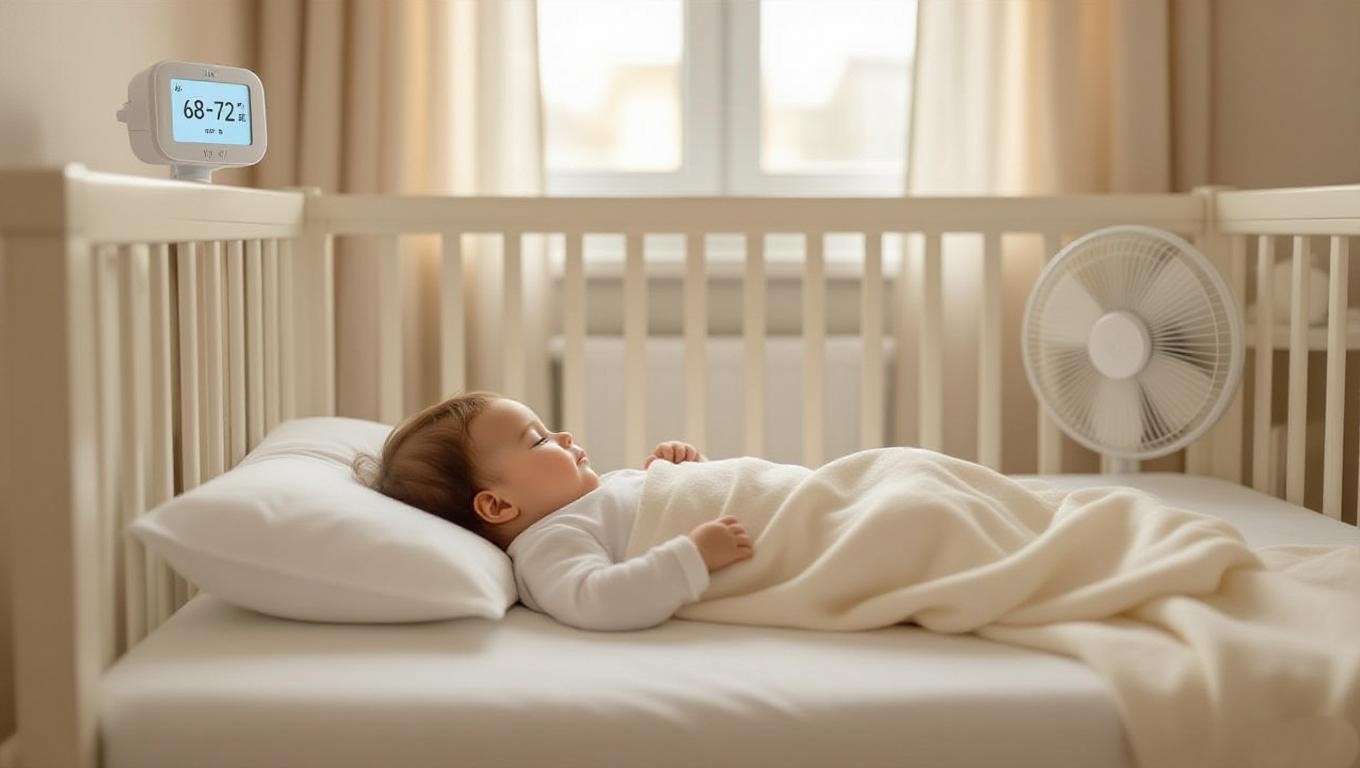
Creating a safe sleep environment is the cornerstone of preventing overheating. This means balancing room temperature, bedding, and clothing to keep your baby comfortable without excess warmth. The AAP recommends a “bare is best” approach—minimal bedding, a firm mattress, and a cool, well-ventilated room. By understanding the signs of overheating and taking proactive steps, parents can foster a sleep space that supports their baby’s health and aligns with holistic well-being principles, promoting both physical comfort and emotional security.
Key Signs Baby Is Too Hot While Sleeping
Physical Indicators
Recognizing the physical signs that your baby is too hot while sleeping is the first step to ensuring their safety. Look for these telltale clues:
- Sweating or Damp Hair: If your baby’s hair or neck feels wet, they may be overheating.
- Flushed Cheeks or Redness: Warm, rosy cheeks or a flushed face can indicate excess heat.
- Warm Chest or Back: Gently place your hand on your baby’s chest or the back of their neck. If it feels hot to the touch, they’re likely too warm.
- Rapid Breathing: Shallow, fast breathing can signal discomfort from overheating.
- Heat Rash: Small red bumps on the skin, especially in folds like the neck or diaper area, may appear.
To check your baby’s core temperature, avoid relying on their hands or feet, which may feel cool even if their body is too warm. Instead, feel their torso or neck for a reliable gauge.
Behavioral Cues
Overheating can also manifest through your baby’s behavior. A baby who’s too hot may:
- Act Fussy or Restless: Constant squirming or irritability during sleep can indicate discomfort.
- Wake Frequently: If your baby is waking more often than usual, overheating could be disrupting their sleep cycles.
- Cry Inconsolably: Persistent crying, especially paired with physical signs, may point to overheating.
It’s important to distinguish these behaviors from normal sleep patterns. For instance, occasional stirring is typical, but consistent restlessness paired with sweating warrants attention.
Warning Signs Requiring Immediate Action
Some signs demand urgent action. If your baby shows any of these symptoms, act quickly and consult a pediatrician:
- Lethargy or Unresponsiveness: A baby who seems unusually sleepy or unresponsive may be experiencing heat exhaustion.
- Refusal to Feed: Overheating can cause dehydration, leading to disinterest in feeding.
- Fever: A temperature above 100.4°F (38°C) in infants under 3 months or 102°F (39°C) in older babies requires immediate medical attention.
Dr. Emily Chen, a board-certified pediatrician, advises, “Parents should trust their instincts. If your baby feels unusually warm or shows concerning symptoms, don’t hesitate to seek medical advice.” This proactive approach can make all the difference.
Common Causes of Overheating in Babies
Excessive Bedding or Clothing
One of the most common culprits of overheating is excessive bedding or clothing. Heavy blankets, thick swaddles, or multiple layers of pajamas can trap heat, especially for newborns who can’t regulate their temperature effectively. For example, using a fleece blanket in a warm room can quickly make a baby too hot. The AAP recommends avoiding loose blankets altogether, opting instead for lightweight, breathable sleep sacks. Here’s a quick checklist for safe bedding:
- Use a fitted crib sheet on a firm mattress.
- Choose sleepwear made of cotton or bamboo for breathability.
- Avoid hats indoors, as babies lose heat through their heads.
Room Temperature Issues
The nursery’s temperature plays a critical role in your baby’s comfort. The AAP suggests keeping the room between 68–72°F (20–22°C) for optimal sleep safety. Common mistakes include placing cribs near radiators, heaters, or sunny windows, which can create hot spots. Inadequate ventilation, such as a closed-off room, can also trap heat. A simple room thermometer can help you monitor conditions and make adjustments as needed.
Environmental and Seasonal Factors
Seasonal changes and environmental factors can exacerbate overheating risks. In summer, high humidity or lack of air circulation can make even a moderately warm room feel stifling. Conversely, in winter, parents may overcompensate with heavy clothing or blankets, assuming their baby is cold. For instance, a parent in a humid coastal region might notice their baby sweating more due to poor airflow. Adjusting for these factors—using fans in summer or lighter layers in winter—can prevent overheating and ensure consistent comfort.
How to Prevent Overheating for Safe Baby Sleep
Choosing the Right Sleepwear
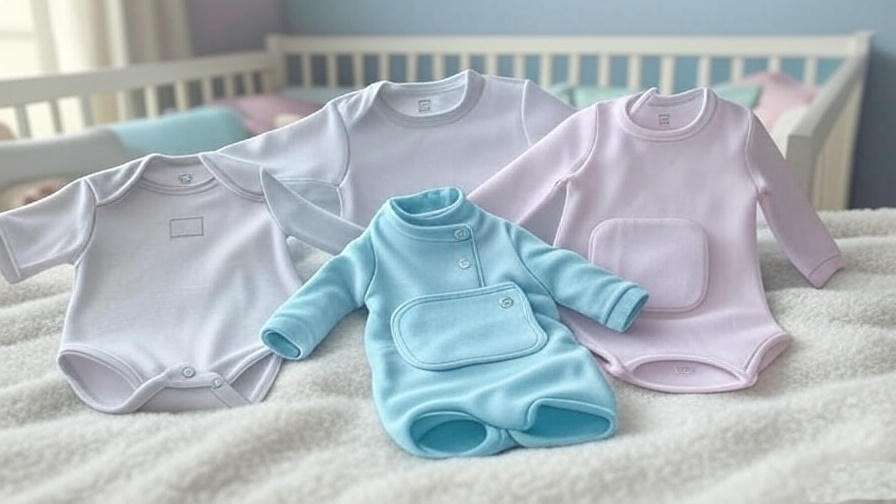
Selecting appropriate sleepwear is essential for preventing overheating. Opt for lightweight, breathable fabrics like cotton or muslin, which allow air circulation and wick away moisture. Sleep sacks with appropriate TOG (Thermal Overall Grade) ratings are a safe alternative to blankets. Here’s a quick guide to TOG ratings:
| Room Temperature (°F/°C) | Recommended TOG | Sleepwear Example |
|---|---|---|
| 75–80°F (24–27°C) | 0.5–1.0 | Lightweight cotton sleep sack |
| 68–74°F (20–23°C) | 1.0–2.0 | Standard cotton sleep sack |
| Below 68°F (20°C) | 2.0–2.5 | Warmer sleep sack with layers |
Always check the manufacturer’s TOG rating and match it to your nursery’s temperature for optimal comfort.
Optimizing the Nursery Environment
A well-designed nursery promotes safe sleep. Here are practical steps to maintain a cool, comfortable environment:
- Use a Room Thermometer: Invest in a reliable digital thermometer to monitor temperature consistently.
- Ensure Ventilation: Use a ceiling fan or portable fan (positioned safely away from the crib) to improve air circulation.
- Control Sunlight: Install blackout curtains to block heat from windows, especially in summer.
- Avoid Overheating Sources: Keep the crib away from radiators, space heaters, or direct sunlight.
For example, a parent in a small apartment might use a clip-on fan to keep air moving without cooling the room excessively. These adjustments create a sleep-friendly space aligned with pediatric guidelines.
Safe Sleep Practices
The AAP’s “Back to Sleep” campaign emphasizes placing babies on their backs on a firm, flat surface with minimal bedding. Here’s a step-by-step guide to a safe sleep setup:
- Place your baby on their back in a crib or bassinet with a firm mattress.
- Use a fitted sheet and avoid loose blankets, pillows, or stuffed animals.
- Dress your baby in a lightweight sleep sack or onesie appropriate for the room temperature.
- Keep the room at 68–72°F (20–22°C) and check ventilation regularly.
- Remove any head coverings, as babies regulate heat through their heads.
These practices reduce overheating risks while supporting healthy sleep patterns.
Monitoring and Adjusting
Regular monitoring can prevent overheating before it becomes a problem. Check your baby’s temperature by feeling their chest or neck during sleep (avoid waking them). Wearable monitors, like smart socks or temperature-sensing devices, can provide real-time data, but choose reputable brands and understand their limitations. For instance, some monitors may over-alert, causing unnecessary worry. Adjust layers or room conditions as needed, and establish a routine to check the nursery environment before bedtime.
What to Do If Your Baby Is Too Hot
Immediate Steps to Cool Baby Down

If you notice signs baby is too hot while sleeping, act quickly but calmly to avoid stressing your baby. Follow these steps:
- Remove Excess Layers: Gently take off any extra blankets, heavy clothing, or swaddles. Switch to a lightweight cotton onesie or sleep sack if needed.
- Move to a Cooler Area: If the nursery feels warm, relocate the baby to a cooler, well-ventilated room temporarily, ensuring their sleep surface remains safe.
- Offer Fluids (If Age-Appropriate): For babies over 6 months, offer a small amount of water or breast milk/formula to prevent dehydration, but only if they’re awake and alert.
- Use a Fan or Cool Cloth: Place a fan at a safe distance to circulate air or gently dab a cool, damp cloth on their forehead or neck (avoid chilling them).
- Check Room Temperature: Use a thermometer to ensure the room is within the safe range of 68–72°F (20–22°C) and adjust as needed.
For example, Maria, a parent from Texas, noticed her 4-month-old was sweating and fussy during a summer night. She removed a thick blanket, turned on a fan, and switched to a 0.5 TOG sleep sack, helping her baby settle back into sleep comfortably. Always prioritize your baby’s safety and comfort while making these adjustments.
When to Seek Medical Help
While most cases of overheating can be managed at home, certain symptoms require immediate medical attention. Contact a pediatrician or seek emergency care if your baby shows:
- Persistent Fever: A temperature above 100.4°F (38°C) for infants under 3 months or 102°F (39°C) for older babies is a red flag.
- Lethargy or Unresponsiveness: If your baby seems unusually sleepy, difficult to wake, or unresponsive, call for help immediately.
- Refusal to Feed: Persistent disinterest in feeding, especially paired with other symptoms, may indicate dehydration or heat exhaustion.
- Rapid or Irregular Breathing: Breathing that remains fast or labored even after cooling measures warrants urgent attention.
The AAP advises keeping a pediatrician’s contact information and a 24/7 pediatric hotline (like 1-800-TRY-CHOP in the U.S.) easily accessible. Dr. Sarah Thompson, a pediatric sleep specialist, notes, “Prompt action can prevent complications. If you’re ever unsure, it’s better to err on the side of caution and consult a professional.”
Long-Term Prevention Strategies
To avoid recurring overheating issues, establish habits that promote a consistently safe sleep environment:
- Create a Temperature Checklist: Before bedtime, verify the room temperature, ventilation, and appropriateness of your baby’s sleepwear.
- Invest in a Smart Thermometer: Devices like digital nursery thermometers can alert you to temperature fluctuations, reducing guesswork.
- Educate Caregivers: Ensure all caregivers (e.g., grandparents, babysitters) understand safe sleep practices to maintain consistency.
- Monitor Seasonal Changes: Adjust sleepwear and room conditions as seasons shift, such as using lighter layers in summer or ensuring proper insulation in winter.
One parent shared, “After my baby overheated once, I started checking the nursery temperature every night and switched to breathable sleep sacks. It’s now part of our bedtime routine, and I feel so much more confident.” These proactive steps align with holistic well-being by reducing parental stress and ensuring baby’s comfort.
Expert Tips for Safe and Comfortable Baby Sleep
Insights from Pediatric Sleep Specialists
Pediatric sleep experts emphasize consistency and vigilance in maintaining a safe sleep environment. Dr. Emily Chen, a board-certified pediatrician with 15 years of experience, advises, “Parents should aim for a nursery that feels comfortable to them in light clothing—that’s usually the right temperature for a baby, too.” Experts also recommend:
- Regular Temperature Checks: Use a reliable thermometer to monitor the nursery, especially during weather changes.
- Breathable Materials: Choose crib mattresses and bedding made of natural fibers to enhance air circulation.
- Safe Swaddling: If swaddling, use thin, breathable fabrics and stop once your baby shows signs of rolling over (typically around 3–4 months).
These insights, grounded in pediatric research, help parents make informed decisions for their baby’s safety.
Holistic Approaches to Baby Comfort
Safe sleep isn’t just about physical comfort—it ties into holistic well-being for both baby and parent. A cool, calm nursery promotes better sleep quality, which supports cognitive development and emotional stability in infants. For parents, reducing anxiety about overheating fosters peace of mind. Try these holistic strategies:
- Mindfulness for Parents: Practice deep breathing or a brief meditation before bedtime checks to stay calm and focused.
- Soothing Bedtime Routines: Incorporate calming activities like a lukewarm bath or gentle lullabies to signal sleep time, helping your baby relax in a comfortable environment.
- Natural Light Exposure: Expose your baby to natural daylight during the day to regulate their circadian rhythm, indirectly supporting better nighttime sleep.
These practices create a nurturing environment that aligns with the principles of happiness and well-being central to your website’s mission.
Seasonal and Age-Specific Considerations
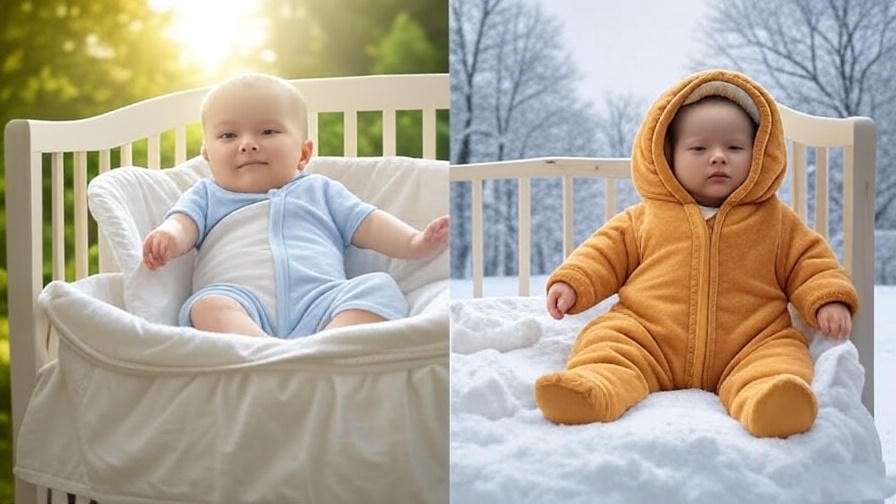
Babies’ needs evolve with age and seasons, requiring tailored approaches:
- Newborns (0–3 Months): Use lightweight swaddles or sleep sacks (0.5–1.0 TOG) and maintain strict temperature control, as newborns are most vulnerable to overheating.
- Older Infants (4–12 Months): Transition to sleep sacks as babies become more mobile. Avoid heavy pajamas even in cooler months.
- Summer: Use fans, breathable fabrics, and minimal layers. Check for humidity, which can make a room feel warmer.
- Winter: Layer lightly (e.g., a onesie under a 2.0 TOG sleep sack) and ensure heaters don’t over-warm the room.
| Age Group | Summer Sleepwear | Winter Sleepwear | Room Temp (°F/°C) |
|---|---|---|---|
| Newborn (0–3 mo) | 0.5 TOG sleep sack | 1.0–2.0 TOG sleep sack | 68–72°F (20–22°C) |
| Infant (4–12 mo) | Cotton onesie | Onesie + 2.0 TOG sack | 68–72°F (20–22°C) |
This chart provides a quick reference for parents to adapt to their baby’s needs year-round.
Frequently Asked Questions (FAQs)
Q1: How can I tell if my baby is too hot without waking them?
A: Gently place your hand on their chest or the back of their neck. If it feels warm or sweaty, they may be too hot. Look for flushed cheeks or damp hair, but avoid disturbing their sleep by keeping checks brief.
Q2: What’s the ideal room temperature for a sleeping baby?
A: The AAP recommends 68–72°F (20–22°C). Use a digital thermometer to monitor the nursery and adjust ventilation or layers as needed to maintain this range.
Q3: Are sleep sacks safer than blankets for preventing overheating?
A: Yes, sleep sacks are safer as they eliminate the risk of loose bedding covering the face. Choose a breathable, appropriately TOG-rated sleep sack to match the room’s temperature.
Q4: Can overheating cause long-term sleep issues for my baby?
A: Occasional overheating is unlikely to cause long-term issues, but chronic discomfort can disrupt sleep patterns. Consistent safe sleep practices prevent this and promote healthy sleep habits.
Q5: What should I do if my baby has a fever while sleeping?
A: Check their temperature with a reliable thermometer. If it’s above 100.4°F (38°C) for infants under 3 months or 102°F (39°C) for older babies, contact a pediatrician immediately. Cool the baby gently while awaiting advice.
Conclusion
Ensuring your baby sleeps safely and comfortably is a top priority for every parent. By recognizing the signs baby is too hot while sleeping—such as sweating, flushed cheeks, or restlessness—you can take swift action to keep them safe. From choosing breathable sleepwear to maintaining an optimal nursery temperature (68–72°F), the strategies outlined in this guide empower you to prevent overheating and reduce risks like SIDS. Backed by pediatric expertise from the AAP and real-world insights, these tips are practical, actionable, and rooted in holistic well-being.
Take the first step tonight: check your baby’s sleep environment, adjust their clothing, and monitor the room’s temperature. Share this guide with other caregivers to ensure everyone is equipped to keep your baby safe. A cool, calm nursery not only promotes restful sleep but also supports your baby’s health and happiness, creating a foundation for lifelong well-being. For more tips on safe sleep and nurturing your baby’s holistic health, explore our related articles on creating soothing bedtime routines and choosing breathable bedding.

